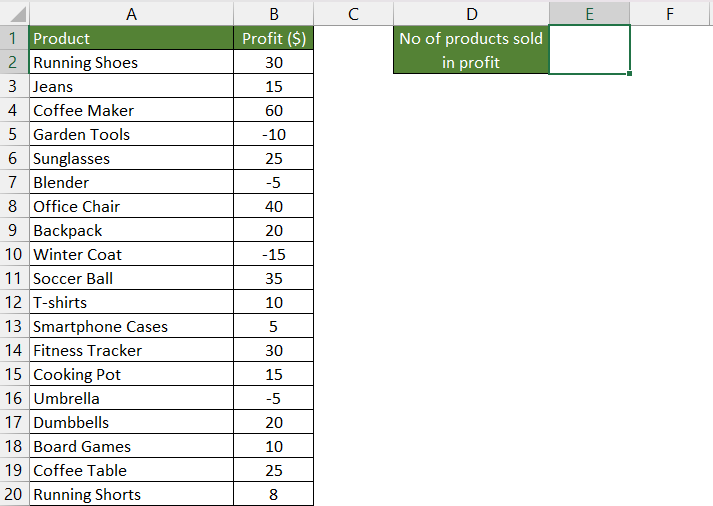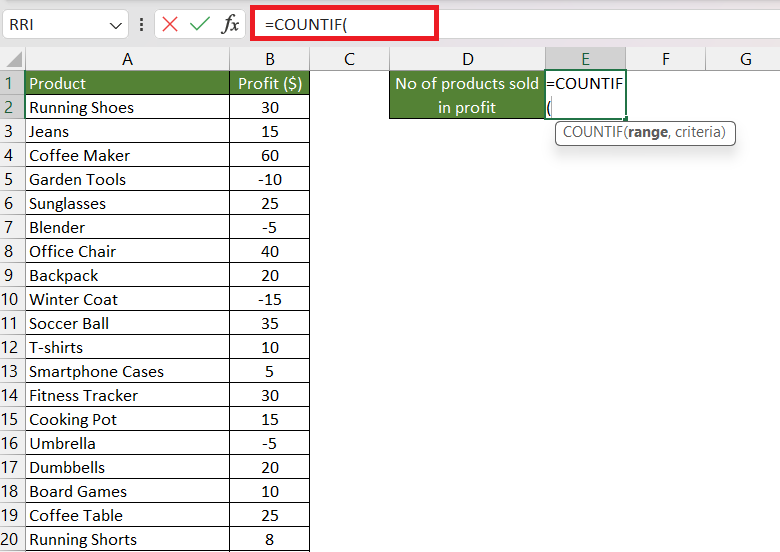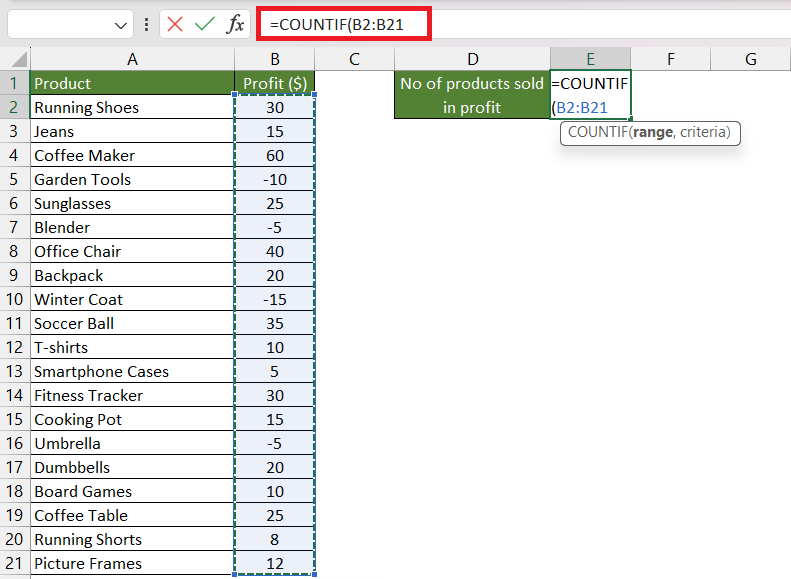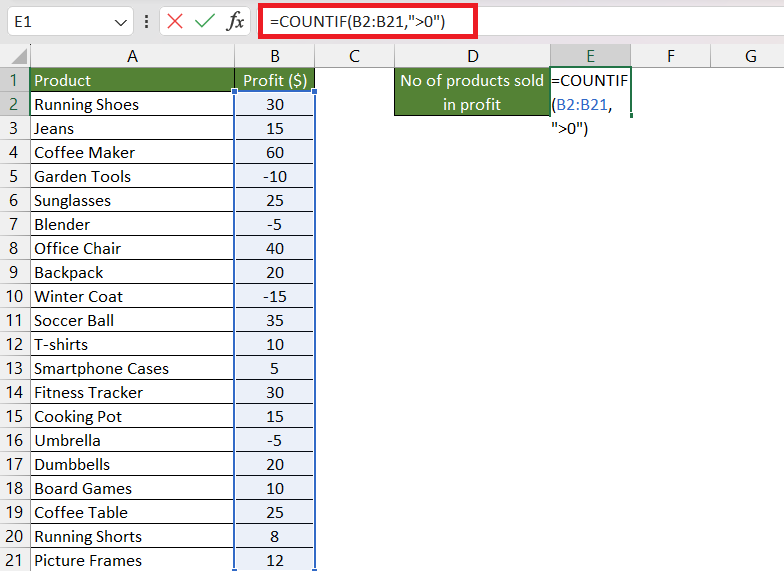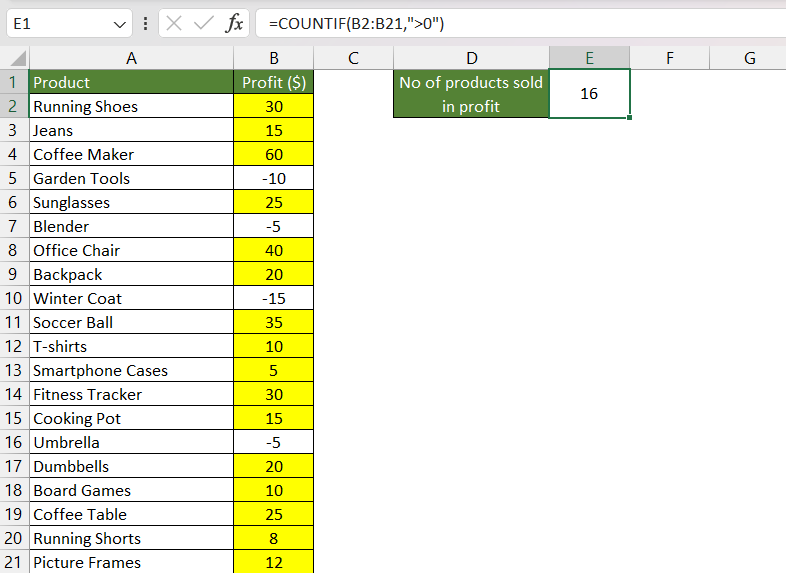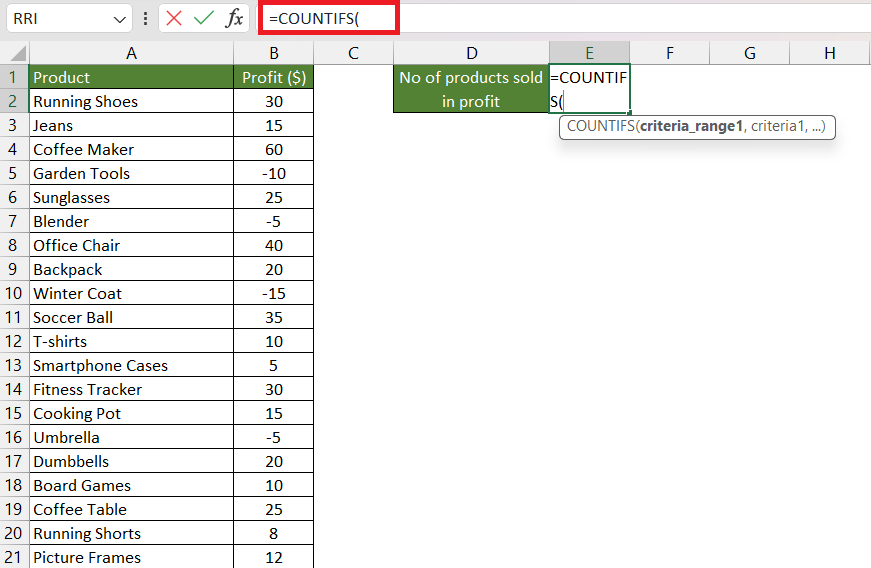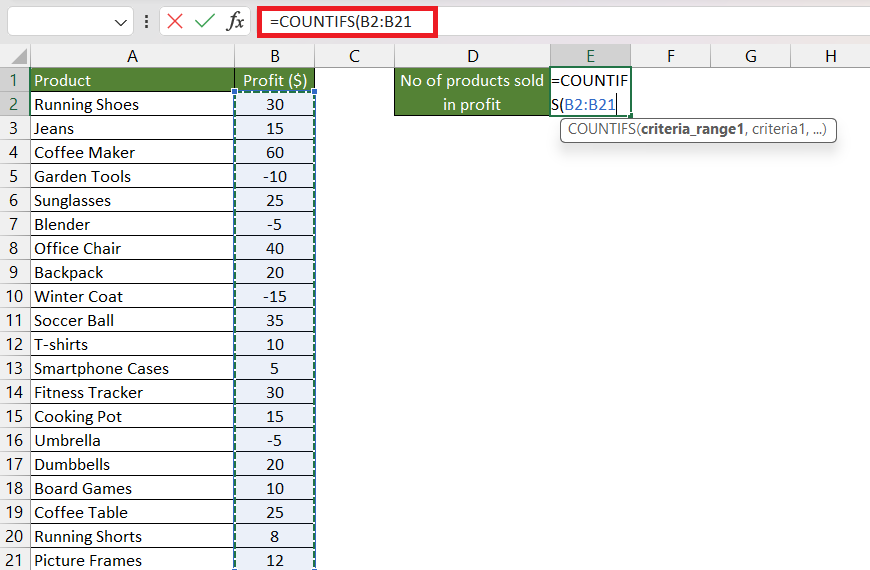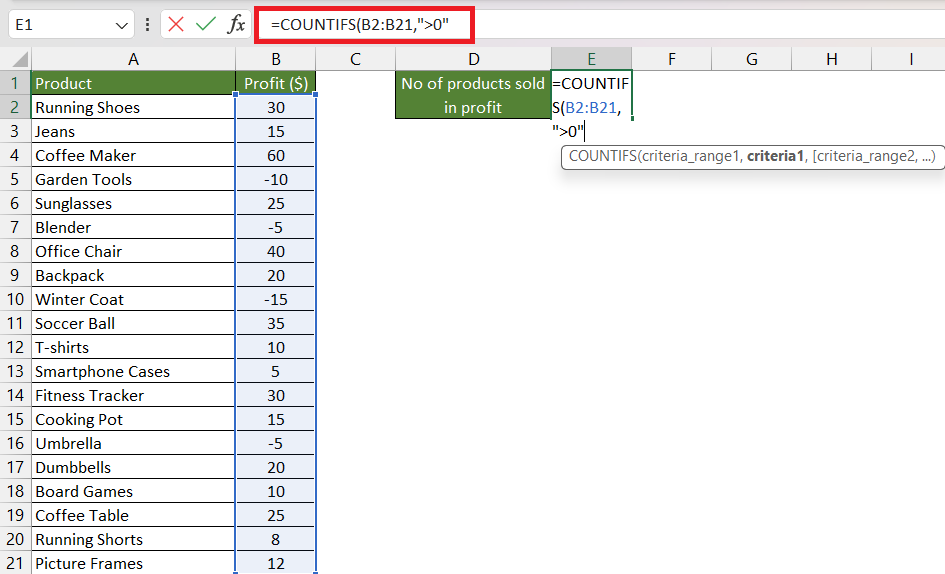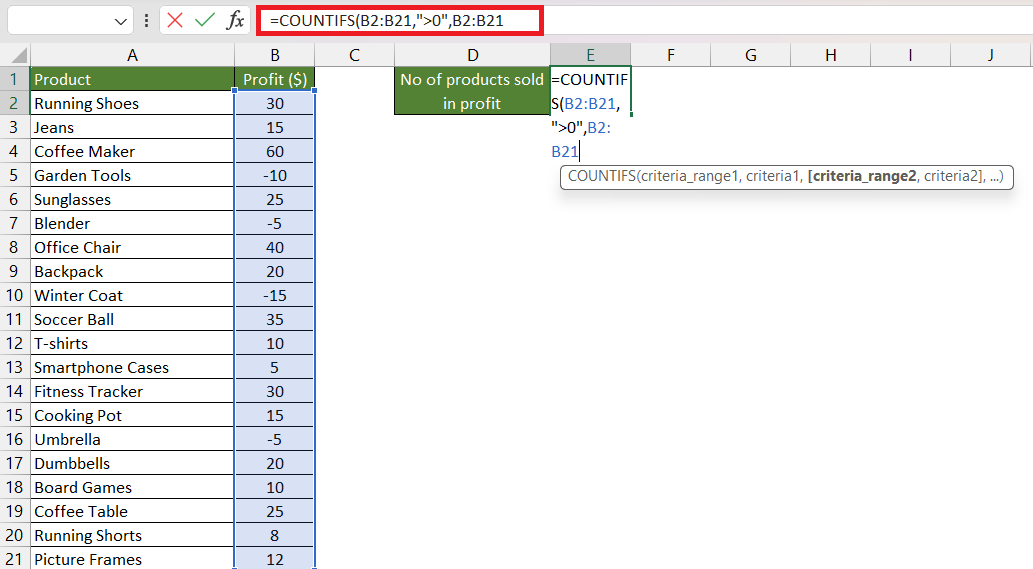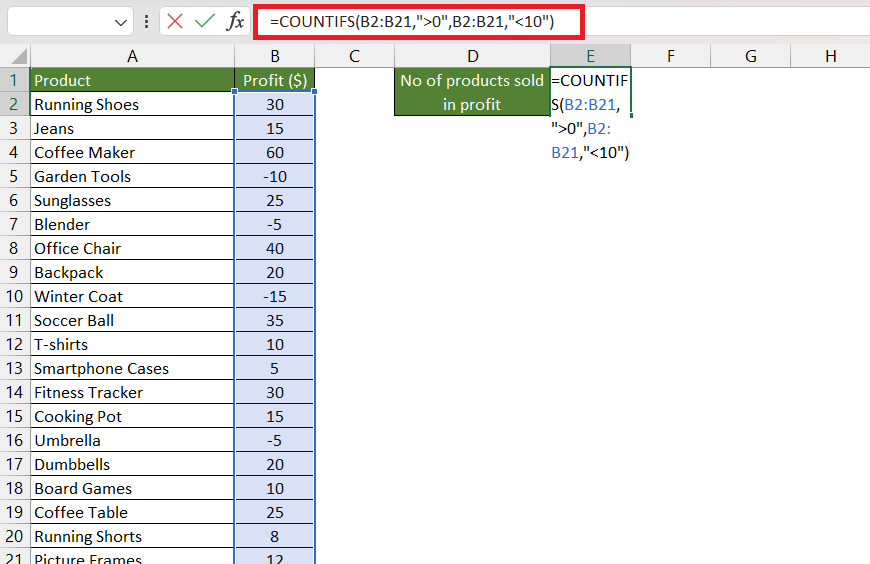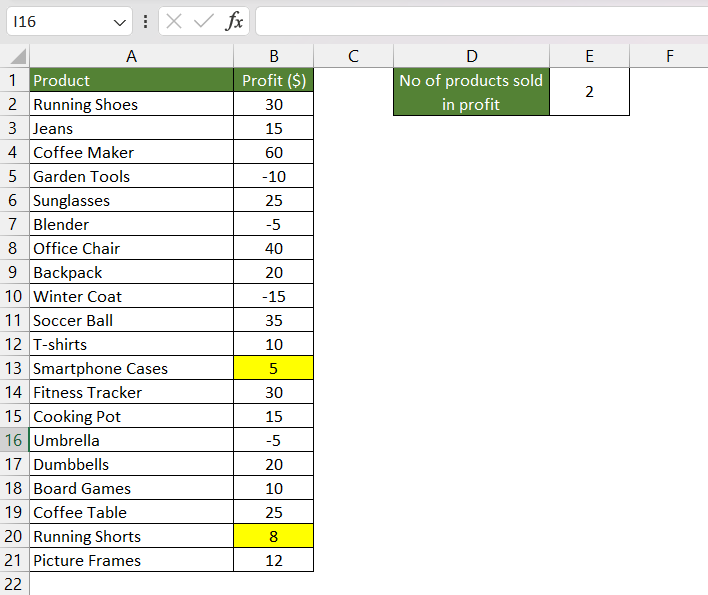Watch our free training video on How to Use COUNTIF Greater Than 0 in Excel


Microsoft Excel is a powerful tool widely used for data analysis, reporting, and decision-making. One of the essential functions in Excel for data analysis is COUNTIF. The COUNTIF function helps you count the number of cells within a range that meets specific criteria.
This article will explore COUNTIF greater than 0, offering you a comprehensive guide to mastering this essential Excel function.
Let’s explore these methods!
Download the Excel Workbook below to follow along and understand How to use COUNTIF greater than 0 – download excel workbookCOUNTIF-greater-than-0.xlsx
Table of Contents
Introduction to COUNTIF
COUNTIF is a statistical function to count the number of cells that meet specific criteria. It can be used to count cells that are equal to a particular value, cells that are greater than or equal to a value, cells that contain certain text, and much more. It can be used to get quantitative information from your data easily.
The syntax of COUNTIF is –
=COUNTIF(range, criteria)
where,
- range – This is the range of cells that you want to apply the condition to.
- criteria – This is the condition or criteria that you want to check.
Let us look at an example to understand better.
COUNTIF greater than 0
Suppose you are a store manager for a retail business, and you want to analyze your sales data to see how many products have been sold with a profit. Below is the data table containing a list of products and their corresponding profit figures.
Here’s how you can use the COUNTIF function with the condition “greater than 0” in this scenario:
STEP 1: Enter the COUNTIF formula.
=COUNTIF(
STEP 2: Enter the first argument i.e. range. Here, it is the list containing profit earned in each product in the range B2:B21.
=COUNTIF(B2,B21
STEP 3: Enter the second argument i.e. criteria. Here, it is that the profit amount should be greater than 0 i.e. >0.
=COUNTIF(B2,B21,”>0″)
The number of products that have a profit amount greater than 0 is displayed in the cell.
COUNTIFS greater than
Suppose you want to know the count of products with low-profit amount (i.e. <10), then you need to check two things –
- Profit Amount >0
- Profit Amount < 10
To check multiple conditions in COUNTIF, you want to use the COUNTIFS function in Excel. The COUNTIFS function applies criteria to cells across multiple ranges and counts the number of times all criteria are met. the syntax of COUNTIFS is –
=COUNTIFS(range1, criteria1,[range2], [criteria2],…)
where,
- range1, range2: The ranges of cells where Excel will look for the data. Multiple ranges can be separated by commas. Each range represents a column or a group of cells in your table.
- criteria1, criteria2: The conditions or criteria that Excel will use to determine which items to count. You provide one criteria for each range. Each criterion can be a value, a cell reference, a text string, or a logical expression.
Follow the steps below to understand how to use COUNNTIFS greater than formula in Excel –
STEP 1: Enter the COUNTIFS formula.
=COUNTIFS(
STEP 2: Enter the first argument i.e. range1. Here, it is the list containing profit earned in each product in the range B2:B21.
=COUNTIFS(B2,B21,
STEP 3: Enter the second argument i.e. criteria1. Here, it is that the profit amount should be greater than 0 i.e. >0.
=COUNTIFS(B2,B21,”>0″
STEP 4: Enter the third argument i.e. range2. Here, it is the list containing profit earned in each product in the range B2:B21.
=COUNTIFS(B2,B21,”>0″,B2:B21
STEP 5: Enter the fourth argument i.e. criteria2. Here, it is that the profit amount should be less than 10 i.e. >0.
=COUNTIFS(B2,B21,”>0″,B2:B21,”<10″)
Excel will provide a count of products with profit amounts between 0 and 10.
Conclusion
Microsoft Excel’s COUNTIF function is an indispensable tool for data analysis, enabling users to count cells that meet specific criteria. In this article, we explored the COUNTIF function with a focus on counting values greater than zero. It can be used to extract valuable insights from their data effortlessly.
By mastering COUNTIF and its variations like COUNTIFS, you can enhance your ability to analyze data effectively.
Further learning:
- 3 Simple Methods to Explore the Power of COUNTIF with OR Logic in Excel
- CountIfs Formula in Excel
- CountIf Formula in Excel
Click here to access Microsoft’s tutorial on the COUNTIF Function!


John Michaloudis is a former accountant and finance analyst at General Electric, a Microsoft MVP since 2020, an Amazon #1 bestselling author of 4 Microsoft Excel books and teacher of Microsoft Excel & Office over at his flagship MyExcelOnline Academy Online Course.


